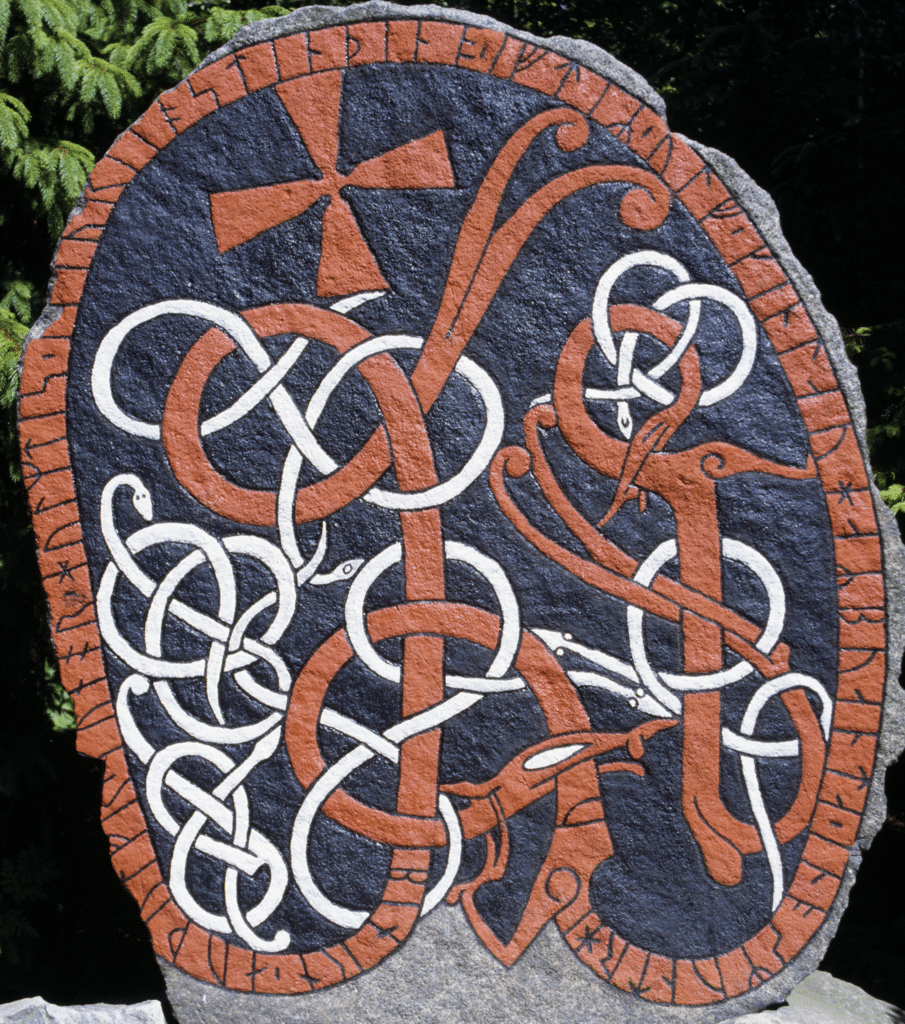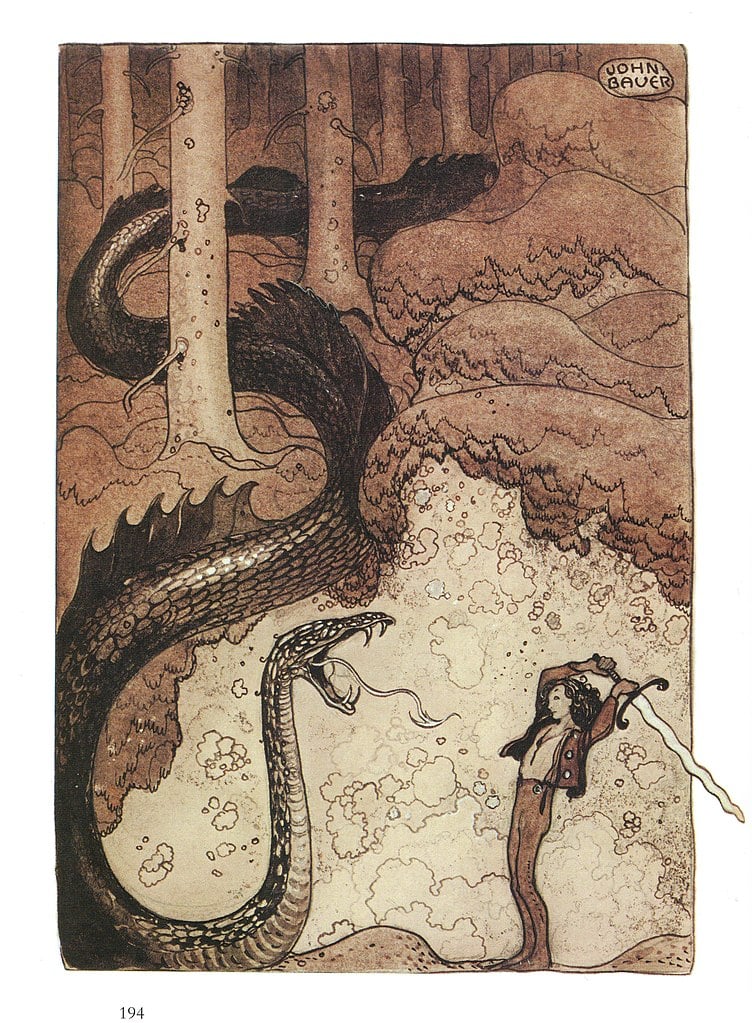Dragons adorned the old vikings ships, and there are several serpents playing central parts in Norse myths. Both dreki (dragon) and ormr (worm/serpent) are Old Norse words. However, there is a third kind of scaled, winged creature that is neither dragon or serpent. That is the lindworm, Old Norse linnormr. Personally I think it might have been more common than both dragons or serpents in parts of Scandinavia during the Viking Age.
Interestingly, the belief in the lindworm survived long after heathen times, well into the 19th century, primarily in Sweden. So long after they stopped making dragon decorations or believed in a world-encircling serpent, they believed in the magical lindworms. This can be compared to how many Scandinavians believed in Freyja and other Norse gods well into the 17th and 18th century.
Description and Magical Abilities of the Lindworm
As is often the case in Norse sagas, there is no one true answer to what a lindworm looks like. However, while there are some small discrepancies, the main points are quite well established.
It is a serpent-like creature, with a scaled body, and one or more spiny dorsal fins and horse-like mane. Besides these characteristics, there are several versions described in old folklore, and in sagas going back to the viking age. Here I am really focusing on the world of the vikings so I will stick with that and their perception of things.

While they would have many, not just two, sharp teeth, the lindworm did not have a poisonous bite. Instead, it would spit a milky-like substance that was poisonous on any would-be attacker. If it was threatened, it could swallow its own tail to form a wheel, and roll away at high speed.
A neat magical feature of the lindworm was that whatever they lied on would grow with the lindworm. So, as is the case with the most famous of all lindworms in the sagas, if they lay on a hoard of gold, the treasure would grow with the lindworm. This is quite like the treasure-hoarding dragon Fafnir, also famous in the Norse sagas.
Lindworm in the Sagas
When diving into the folklore and sagas where lindworms are mentioned, I found several examples of quite “modern” stories. As late as in the 19th century, stories of lindworm sightings were well known. Much like the more modern hunt for the Loch Ness monster, or the North American Sasquatch.
In 1884, a Swedish scholar of cultural history was so convinced of their existence, he offered an award to anyone who could get him a specimen. Sadly, no one was ever able to claim the award. After this the myth of the lindworm in Swedish society at least died out more or less.
Ragnar Lothbrok’s Fight for Thora’s Hand in Marriage
The most famous lindworm in the Old Norse sagas is by far the one the legendary viking king Ragnar Lothbrok fought to win the heart and hand of Thora Borgarhjört.

This is in fact the story of how Ragnar, who’s surname really was Sigurdsson, got the epithet Lothbrok, meaning shaggy-pants. As such, you find the story mentioned in both of the core Lothbrok sagas, Saga of Ragnar Lothbrok, and the Tale of the Sons of Ragnar Lothbrok. Furthermore, it is also mentioned in the poem Krákumál, styled as a monologue by Ragnar, and finally in the Saga of Bósi and Herraud. It is in that last saga where we actually learn the origins story of where the egg came from, before the lindworm was hatched.
The story goes that there was a king in the western part of Sweden who had a beautiful daughter. As a child he gave her a pet snake, or a beautiful magical egg, depending on the saga. Where the egg is involved, it is described as being magical, created by a witch, or trolls, and decorated with letters (probably runes then) in gold.
The little snake laid in a box, on a bed of gold coins or small artifacts. As the snake grew, it needed more and more space. In the end it encircled all of Thora’s house, guarding both her and the treasure fiercely.
Having become a problem, and a dangerous one at that, the king wanted to get rid of it. He thus offered both the hand of his daughter Thora in marriage, and the treasure, to anyone who could kill the lindworm.
The Shaggy Pants of Ragnar
Many men tried to fight it, but all perished, killed by its bite, or the poison it would spit on them. This was until Ragnar Sigurdsson came up with an ingenious plan. To protect himself from its bite and poison, he had made a special pair of pants and coat. Made of shaggy fur, he had the pants and coat boiled in tar. Then, before facing the monster, he rolled himself and the tar clothes in sand. This effectively protected him from both the poison and the bites, and he killed the beast.
In the end Ragnar and Thora were happily married, and forever after, he would be known as Ragnar Lothbrok.
Featured image copyright Eyvind Lillevold
